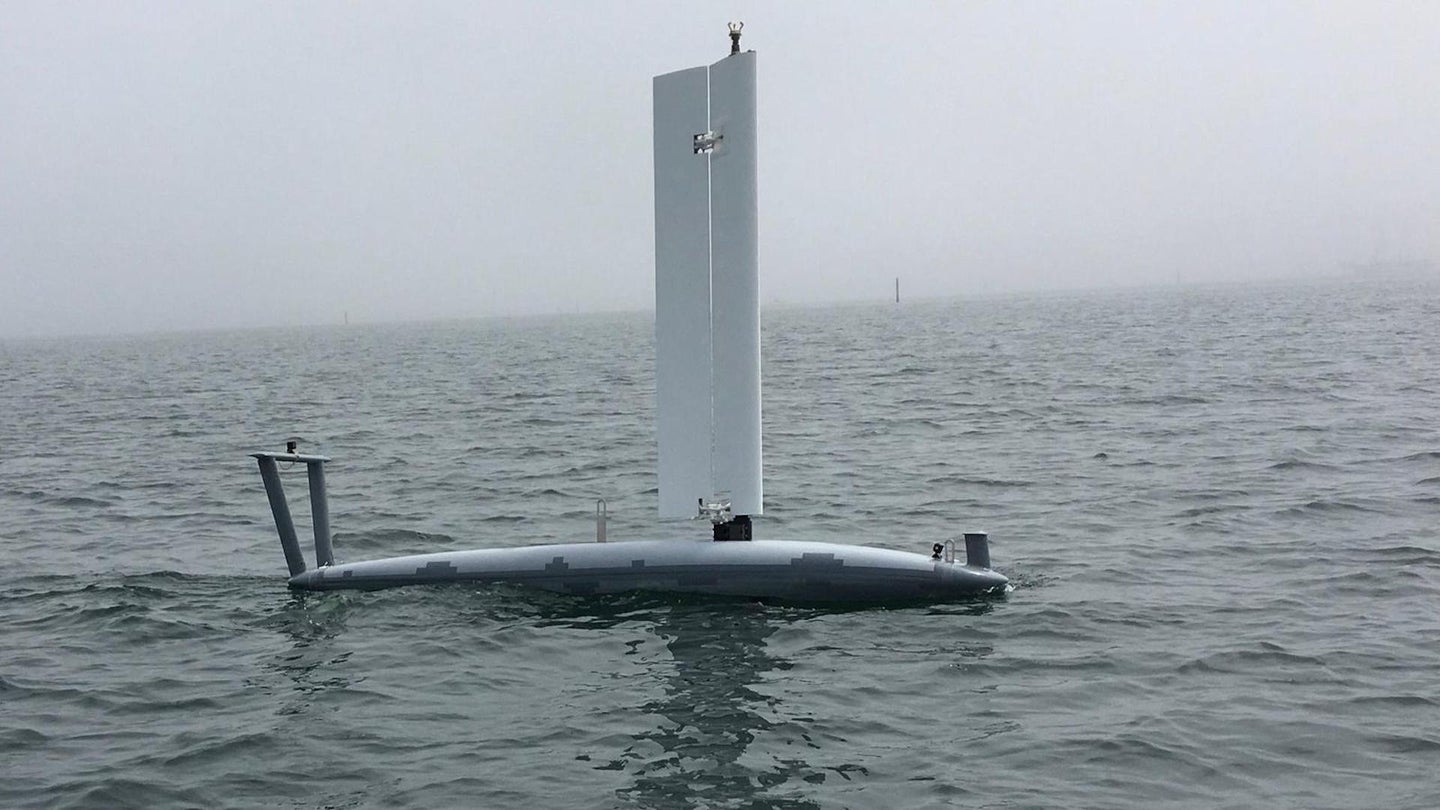Lockheed Invests in Ocean Aero, a Solar & Wind-Powered Ocean Drone Start-Up
Lockheed Martin Ventures just invested in San-Diego based start-up, Ocean Aero, which develops undersea drones powered by the wind and sun. The ocean drone market is quietly growing.

Lockheed Martin Ventures just invested an undisclosed amount into San-Diego based, Ocean Aero, a small start-up working on a solar and wind-powered ocean drone called the Submaran. Lockheed isn’t the only aerospace company looking toward ocean drones as a profitable investment, as Boeing acquired Liquid Robotics earlier this year, and General Dynamics and L3 Technologies have acquired similarly oriented companies in the past year and a half.
According to the Los Angeles Times, chief executive of the 25-employee Ocean Aero, Eric Patten, says “The ability to be environmentally powered allows us to maneuver at greater persistence because it’s renewable. And then to be able to transition that vehicle from the surface to a sub-surface vehicle that has significant capability under water, that is truly unique.”
Reportedly, Lockheed normally invests anywhere between $1 million and $5 million in young, newly acquired companies. The executive director of Lockheed Martin Ventures, Chris Moran, is confident the new acquisition will benefit both the company and its clients. He says, “Ocean Aero represents the next generation of environmentally powered autonomous systems. Our investment will allow us to better respond to customers’ maritime needs with technology solutions for a diverse set of missions.”
The LA Times claims that, according to a report by The Washington Times last year, the U.S. military intends to spend as much as $3 billion in undersea technologies over the next few years. The drone market is booming, and it seems companies and governments are aware that the ocean shouldn’t be a blind spot. “There is momentum,” said Greg Murphy, executive director of the Maritime Alliance. “The Navy is increasingly using autonomous systems, and the large defense contractors are starting to buy up smaller blue tech companies that are developing systems.”
In 2016, Lockheed and Ocean Aero demonstrated a version of the Submaran at the Naval Undersea Warfare Center, in Newport, Rhode Island. It patrolled the surface, above a Lockheed Marlin, an undersea drone, and was able to successfully communicate between the shore and the undersea drone. The shore-to-Submaran connection was achieved via radio signal, while the connection between Submaran and the Marlin used acoustics. “That communications gateway mission is critical,” said Eric Patten. “If you are operating a wind farm off the coast and you have things underneath the surface and you want to communicate with that equipment, there are only a couple of ways to do it.”
Ocean Aero manufactures three different drones according to the LA Times. The S10 Submaran is 14 feet long, with an 8-foot solar/wind wing. It can dive around 30 feet and glide underwater, with rechargeable lithium batteries providing month-long uninterrupted use. This drone is mainly intended for prospective research and commercial clients. A variation on this is sized the same but can dive to 660 feet, and maneuver below the surface. Ocean Aero’s Silent Aero is 40 feet long, can dive to 660 feet as well, but has the added perk of being able to carry a 2,000-pound payload.
“In terms of robotics in the oceans, you can do things faster, cheaper and more efficiently,” says Murphy. “You can have robots out at sea collecting data, searching for things that shouldn’t be in the water and would present problems for the United States, or trying to find data where you want to have a cover operations [sic].”
It’s clear that drones powered by the wind and sun are a remarkably green and clever way to allow these autonomous systems to collect data and feed it back to shore. Scientists and researchers can benefit greatly from having autonomous drones collect their data for them. Underwater drones can replace manual missions requiring people, can be powered by the elements, and free up time for researchers to focus on other tasks. It’ll be interesting to see this seeming niche drone market expand in the next few years.
